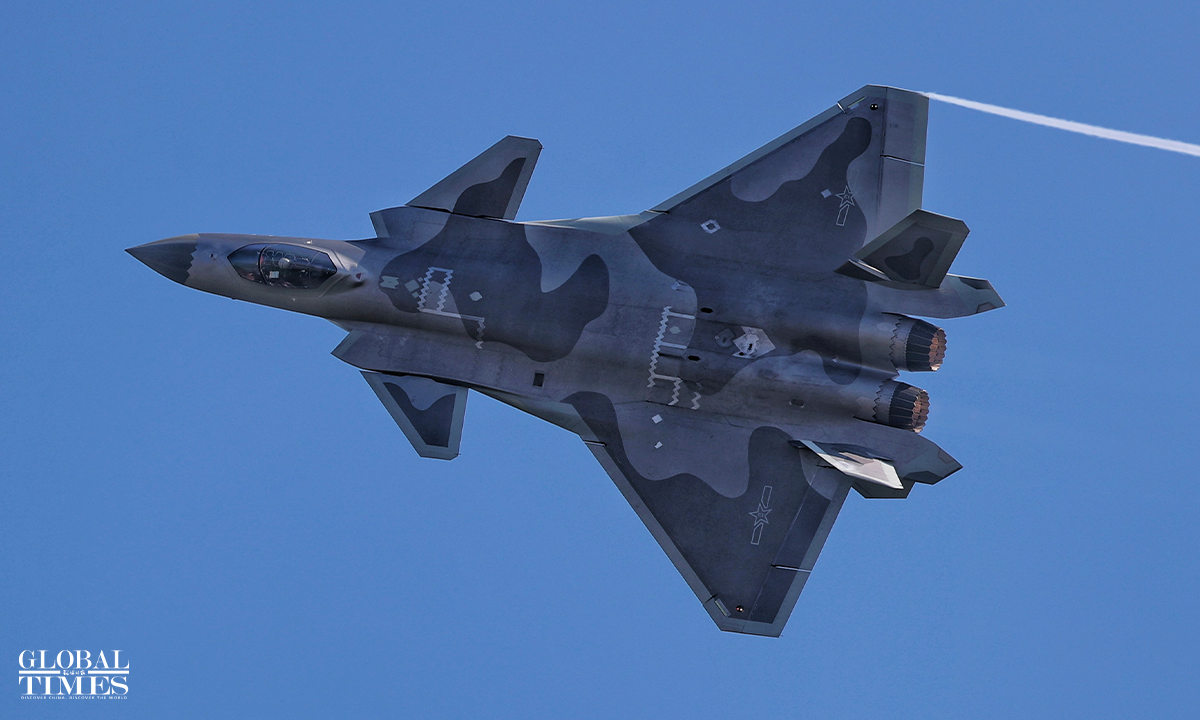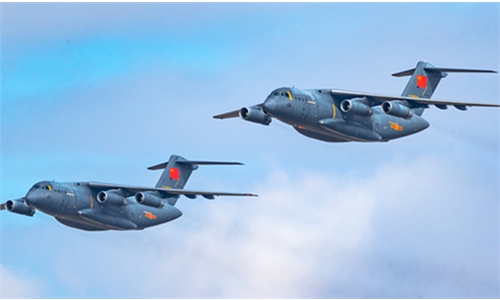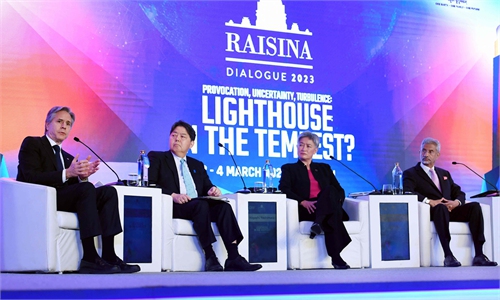Hyping China’s military expenditure a tactic for India, others to serve their own ends

A J-20 stealth fighter jet performs during Airshow China 2022 in Zhuhai, South China's Guangdong Province, on November 9, 2022. Photo: Cui Meng/GT
During China's annual two sessions, it has almost become a routine for some Western media outlets and think tanks, especially those from the US, to hype and misinterpret the country's military spending. This year, an Indian think tank has joined the queue.A Delhi-based think tank Indo Pacific Centre for Strategic Communications (IPCSC) on Tuesday published a report entitled "China Defence Expenditure Hides More Than It Reveals." In response to China's plan to boost defense spending by 7.2 percent this year, the report said, "The defence budget points to a widening gap between China's military and economic development, a trend under which economic growth is taking a back seat to expansion of defence capabilities." It also groundlessly accused China of lacking transparency in terms of military expenditures.
It is groundless for some external forces to hype up the so-called China's non-transparent military spending. China has been submitting reports on its military expenditures to the UN every year since 2008. The country has been transparent in terms of both weapons and equipment as well as military spending. Furthermore, China announces its military budget every year during the two sessions to the international community, which is also a practice of transparency.
The world has entered a period of turmoil and change, with instability and uncertainty on the rise, and factors threatening China's national sovereignty, security, and development are also ramping up. Against this backdrop, it is entirely normal for Beijing to moderately increase military spending and enhance capabilities to deal with risks. And China upholds the guideline of coordinated development of national defense and the economy, and appropriately determines the scale of defense spending in light of actual defense needs and national economic development level.
China will not seek a military race with any other country. The US, Japan and some European countries have significantly increased their military spending. Across the world in 2021, world military spending as a share of world GDP reached 2.2 percent, while China's is much lower than that figure, even though the country has the ability to increase its defense budget to 2.2 percent of its GDP. This demonstrates that China's development of national defense is moderate, and the country pursues the path of peaceful development.
Additionally, among the world's major military countries, China's per capita military expenditure accounts for a small proportion, much less than that of the US. Therefore, China's military spending can only be described as moderate, capable of meeting the needs of maintaining the country's security, sovereignty, and development interests, but still significantly lower than the world's average level, said Song Zhongping, a Chinese military expert and TV commentator.
Since the US has identified China as its top competitor, they attempt to exploit every possible topic to exaggerate the "China threat." China's military spending is a good excuse for expanding its own military and raise its defense budget.
It's likely the IPCSC, a new think tank founded in 2021, is attempting to increase its popularity by hyping China's military expenditure. In recent years, some Indian media and think tanks have increasingly been infiltrated by the US and the West, eroding India's so-called strategic autonomy, according to Lan Jianxue, director and associate research fellow at Department for Asia-Pacific Studies, China Institute of International Studies.
In addition, exaggerating the so-called China's military threat is also a tactic for various military and political groups in India to vie for a larger budget, noted Lan.
It is noteworthy that India has been among the world's largest arms importers, accounting for 11 percent of global imports, according to the Stockholm International Peace Research Institute. It was reported in 2022 that over the next five to seven years, the Indian government plans to spend $130 billion for fleet modernization across all armed services. Such kind of year-round mode of spending huge sums of money to purchase large quantities of weapons puts heavy pressure on India's finances and is becoming increasingly unsustainable, said Lan.
India is now actively cooperating with the US in the security field to contain China, such as participating in the Quad and strengthening bilateral cooperation with the US in the security field. If this continues, it will only intensify China-India relations and make the region less peaceful, less stable, and more turbulent. India should not be instigated by Western countries, particularly the US, to create more troubles in the region. It is hoped that the Indian government and think tanks there will prioritize peace and stability, instead of manipulating geopolitics.
The author is a reporter with the Global Times. opinion@globaltimes.com.cn


